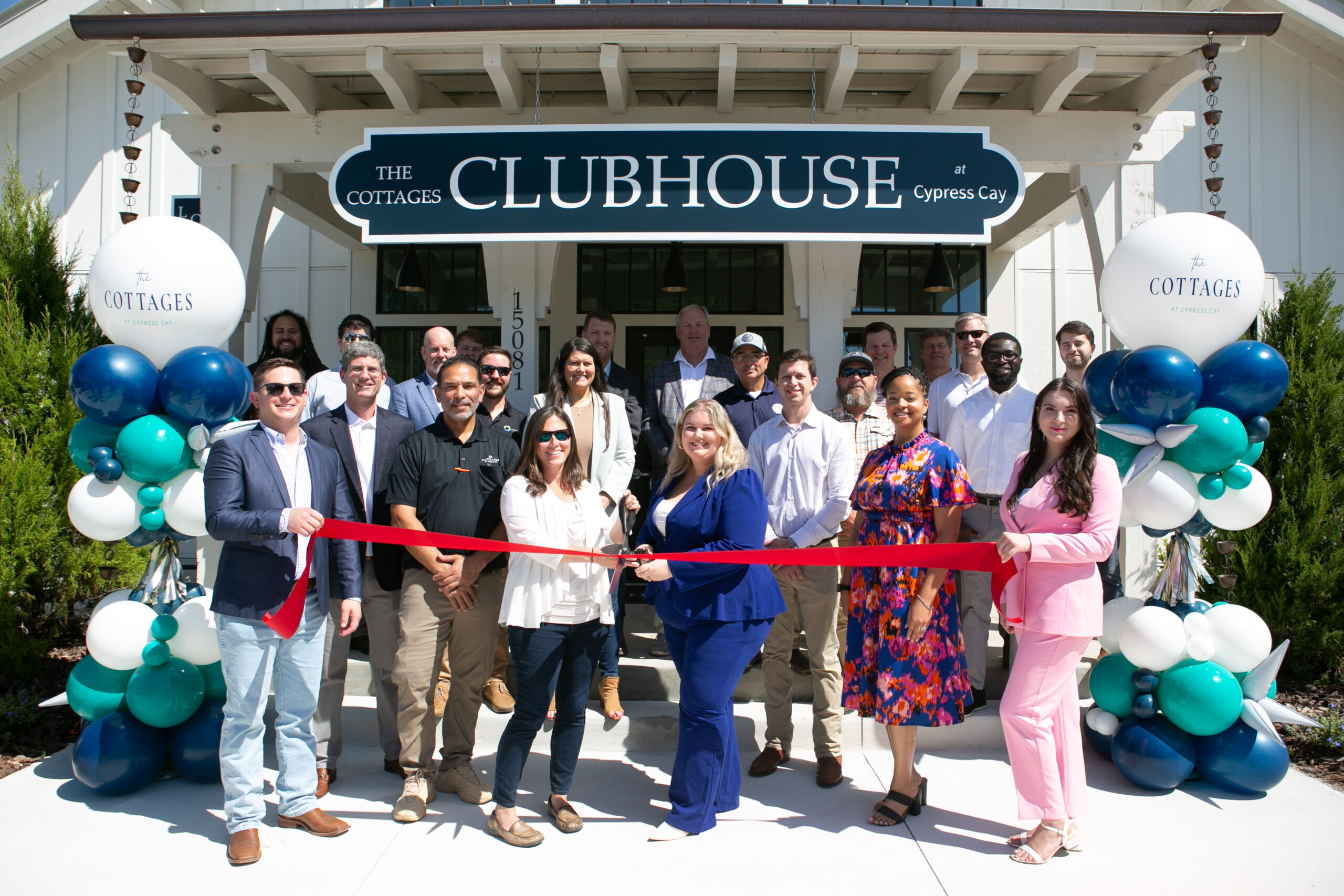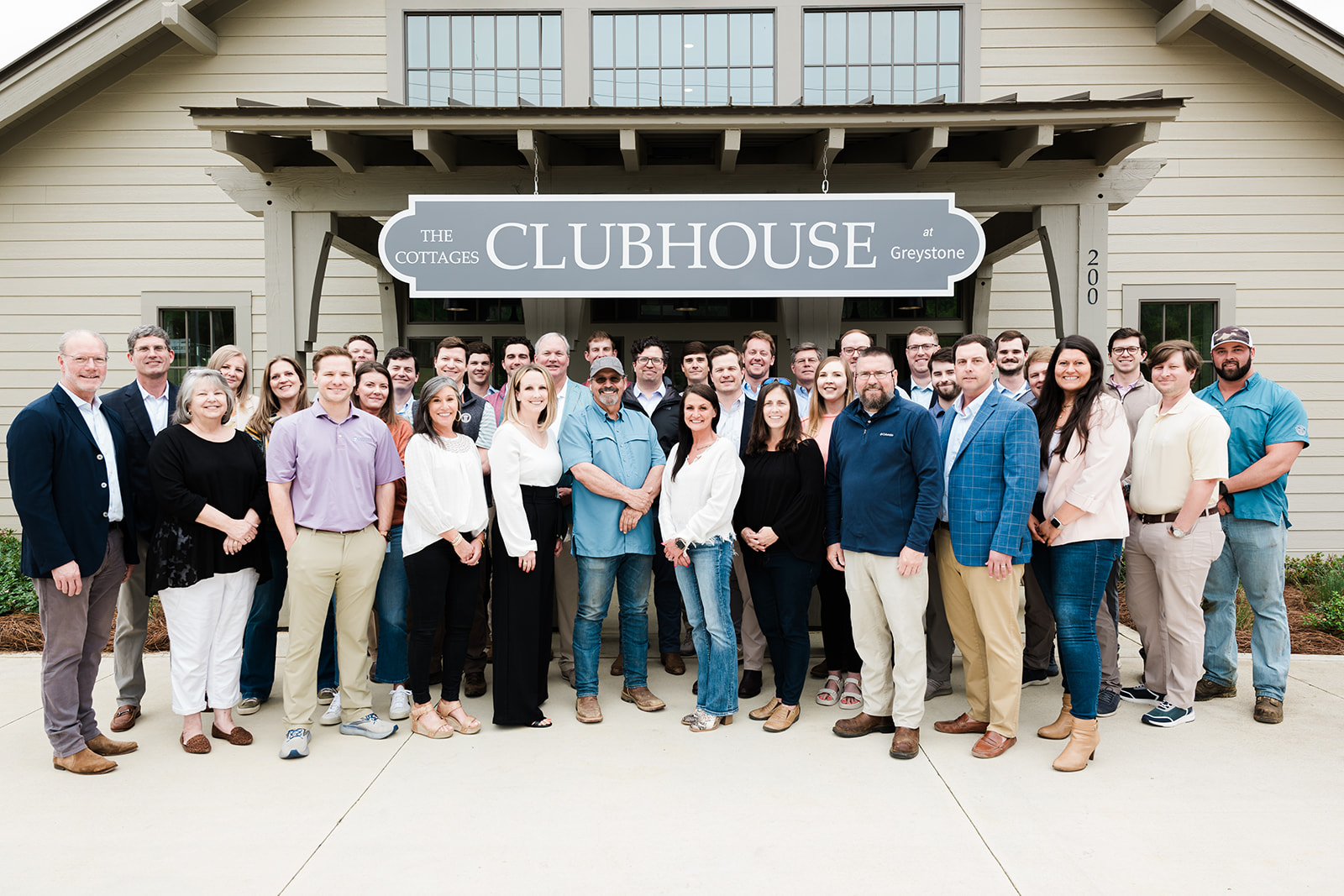While homebuilders across Central Florida are racing to find suitable locations for purpose-built rental subdivisions, another build-for-rent product line is starting to gain traction in the region: the horizontal apartment complex.
The first such community is under construction now in Daytona Beach at the intersection of I-95 and LGPA Boulevard. Alabama-based Capstone Communities and its in-house general contractor broke ground in December on The Cottages of Daytona Beach and will deliver the first units by the end of the year.
The horizontal apartments differ from BFR subdivisions now in development by D.R. Horton in Apopka and American Homes 4Rent in St. Cloud. In those cases, the neighborhoods are designed as traditional single family subdivisions with individually-platted lots that all will be owned and managed by either the builder or an institutional investor.
In horizontal apartment communities, the neighborhoods are built on a single lot — like a commercial apartment complex. The housing units tend to be smaller, but they have private yards and amenities that closely resemble those found in the most upscale apartment complexes.
“We’ve seen the cottage-style concept prove highly successful in numerous student housing communities we have developed and managed across the country,” said John Acken, executive vice president of development for Capstone Communities. “As we’ve begun introducing this build-for-rent concept to the multifamily sector, it presents an attractive housing option for individuals in a life transitional phase — whether moving to a new city, preparing to eventually buy a home, or downsizing.”
BFR communities are one of the fastest growing trends in the multifamily real estate segment today. Most BFR communities consist of single-story cottage-style homes and private yards with access to upscale apartment-like amenities.
Capstone specialized in student housing before launching its first two horizontal apartment, or cottage, communities in Alabama. The firm first attempted to enter the Florida market in 2020 when it contracted to buy 24 acres within the Four Corners Town Center DRI in Davenport.
After the COVID-19 shutdown, Capstone failed to close on the deal and walked away. The company shifted its focus to Daytona, and the Four Corners site is now under contract to Pulte Homes.
Acken told GrowthSpotter the company is still eyeing the Central Florida market. “We remain very interested in the Central Florida market and believe in the long-term growth potential for the area,” he said.
Some of the biggest players in the industry have pegged Central Florida as a prime target for growth. NexMetro Communities, which has been building luxury leased home communities in the Southwestern U.S. for over a decade, opened a Central Florida division last year and will launch its first project in the Tampa market.
New York-based Lexin Capital, which just paid $70 million for a recently built apartment complex in Kissimmee, is scouting sites in the region and looking for partners to build horizontal apartments.
“We love that model — we’re building that now in Phoenix,” CEO Metin Negrin said. “We’d love to do five to 10 of those in Tampa and Orlando, if we can find the land.”
South Florida-based EDEN Multifamily principals Jay Jacobson and Jay Massirman have joined forces with America’s Capital Partners Principal Sergio Socolsky to launch EDEN Living, a new horizontal apartment development firm that will blanket the state of Florida and then expand to other major markets in the Southeast.
Jacobson said the firm has five sites under contract in Florida, including at least one in Central Florida, where it will build 1,000 units in this calendar year. He said their goal is to replicate the success NexMetro has had out West and tweak it.
“Those guys are very good at what they do and what they’ve accomplished, and so they kind of set the standard for the asset class,” Jacobson told GrowthSpotter. “I think we’re taking it to the next generation. The second generation will be a bit more refined product. We design our product a little bit differently. We cluster the units in what we call five-unit clusters, but everyone has their own private entrance — no breezeways, no stairs, no one above you, no one below, no one next door to you.”
Jacobson expects all the national homebuilders to start forming their own BFR divisions in Florida, which makes competition for suitable sites fierce.
“This product is very, very cost sensitive because the densities are a lot lower,” he said. “We build the product when we mix in some two story townhomes along with the one story horizontal product. We build to a 14 to 15 units to the acre density. And, you know, a typical 3-story, walk-up surface parked apartment deal is 24 to 28 units to the acre. So land cost becomes very, very sensitive.”
Developers can build the lower densities because they charge premium rents for horizontal product. Renters will pay more for the privacy, fenced yard and extra windows. According to market expert John Burns Real Estate Consultants, BFR concepts generate approximately 20-30% rental rate premiums compared to traditional multifamily apartments because of their design and amenity offerings.
Still, the product category is so new to the region that many projects that were proposed in the last year failed to launch because of zoning regulations and impact fees.
Avex Homes President Eric Marks wanted to introduce horizontal apartments last year on a site it had under contract in Osceola County, but couldn’t make it work. In a meeting last June with the Development Review Committee, planning officials told him they wouldn’t relax the county’s single family subdivision standards for rental communities. That would have meant higher parking requirements and more costly impact fees than an apartment complex. And the internal roads would have to be built to county standards, unlike a drive aisle within an apartment complex.
After the meeting, Marks decided to scrap the SFR idea and go with a traditional fee-simple subdivision.
“I think it’s probably not viable at that location,” he said. “The key thing is the impact fees. It’s just not feasible. You either end up with a subdivision that has too much parking for a rental community, or you go with smaller units to reduce the parking, but you can’t charge enough rent on a 2-bedroom unit to justify the $34,000 per lot fees.”
He’s still committed to the concept and may introduce it at Avalon Park Daytona Beach. “Whether we do there or someone else, I do think there will be a Build-for-Rent component there,” Marks said.
Acken said Capstone has run into similar challenges and found ways to work around them.
“The cottages don’t typically fit into the classic definition of single family or multifamily because they are for-rent individual homes on one large parcel (instead of one parcel per home),” he said. “That being said, many jurisdictions understand and support this type of development and are therefore willing to work with us. This could either mean modifying their existing code or allowing us to move forward as a planned unit development, giving developers more flexibility.”

